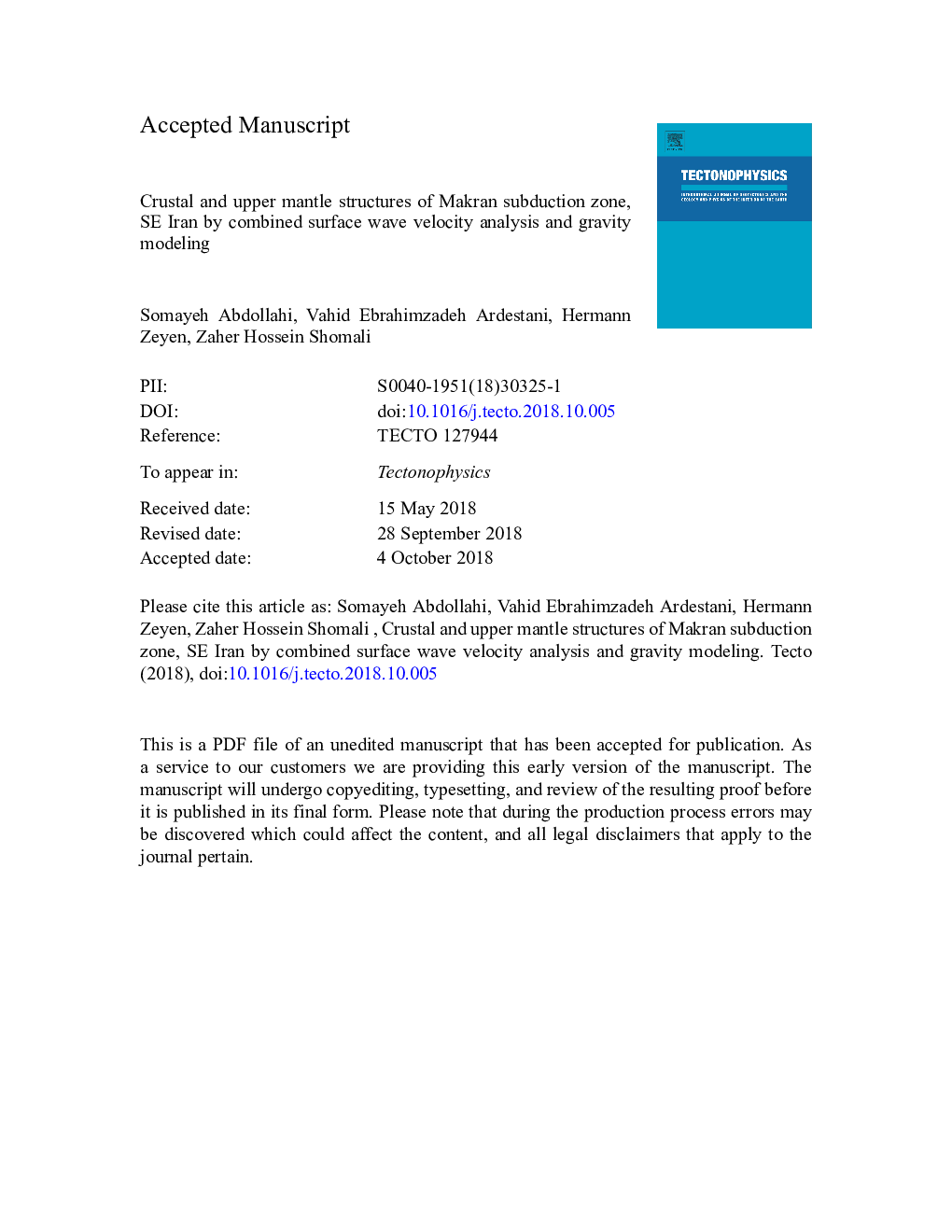| کد مقاله | کد نشریه | سال انتشار | مقاله انگلیسی | نسخه تمام متن |
|---|---|---|---|---|
| 11263478 | 1701093 | 2018 | 44 صفحه PDF | دانلود رایگان |
عنوان انگلیسی مقاله ISI
Crustal and upper mantle structures of Makran subduction zone, SE Iran by combined surface wave velocity analysis and gravity modeling
ترجمه فارسی عنوان
ساختارهای مدور پوسته و فوقانی ناحیه فرورانش مکران، ایران، ایران با استفاده از تحلیل سرعت متحرک سطح و مدل سازی جاذبه
دانلود مقاله + سفارش ترجمه
دانلود مقاله ISI انگلیسی
رایگان برای ایرانیان
کلمات کلیدی
موضوعات مرتبط
مهندسی و علوم پایه
علوم زمین و سیارات
فرآیندهای سطح زمین
چکیده انگلیسی
The inversion of Rayleigh wave group velocity dispersion curves is challenging, because it is non-linear and multimodal. In this study, we develop and test a new Rayleigh wave dispersion curve inversion scheme using the Shuffled Complex Evolution (SCE) algorithm. Incorporating this optimization algorithm into the inverse procedure not only can effectively locate the promising areas in the solution space for a global minimum but also avoids its wandering near the global minimum in the final stage of search. In addition, our approach differs from others in the model parameterization: Instead of subdividing the model into a large number of thin layers, we invert for thickness, velocities and densities and their vertical gradients of four layers, sediments, upper-crust, lower-crust and upper mantle. The proposed inverse procedure is applied to non-linear inversion of fundamental mode Rayleigh wave group dispersion curves for shear and compressional wave velocities. At first, to determine the efficiency and stability of the SCE method, two noise-free and two noisy synthetic data sets are inverted. Then real data for Makran region in SE Iran are inverted to examine the usage and robustness of the proposed approach on real surface wave data. In a second step, we applied 3D Gravity Modeling based on surface wave analysis results to obtain the density structure and thickness of each layer. The reason for using both types of data sets, is that gravity anomaly has a bad vertical resolution and surface wave group velocities are good for placing layer limits at depth, but they are not very sensitive to densities. Therefore, using gravity data increases the overall resolution of density distribution. In a final step, we used again the SCE method to invert the fundamental mode Rayleigh wave group dispersion curves based on the gravity results. Gravity results like thicknesses and sediment densities have been used to constrain the limit of search space in the SCE method. Results show a high shear and compressional velocity under the Gulf of Oman which reduce to the North of the Makran region. The Moho depth of the Oman Gulf is about 18-28â¯km and it increases to 46-48â¯km under the Taftan-Bazman volcanic-arc. The density image shows an average crustal density with maximum values under the Gulf of Oman decreasing northward to the Makran.
ناشر
Database: Elsevier - ScienceDirect (ساینس دایرکت)
Journal: Tectonophysics - Volumes 747â748, 13 November 2018, Pages 191-210
Journal: Tectonophysics - Volumes 747â748, 13 November 2018, Pages 191-210
نویسندگان
Somayeh Abdollahi, Vahid Ebrahimzadeh Ardestani, Hermann Zeyen, Zaher Hossein Shomali,
